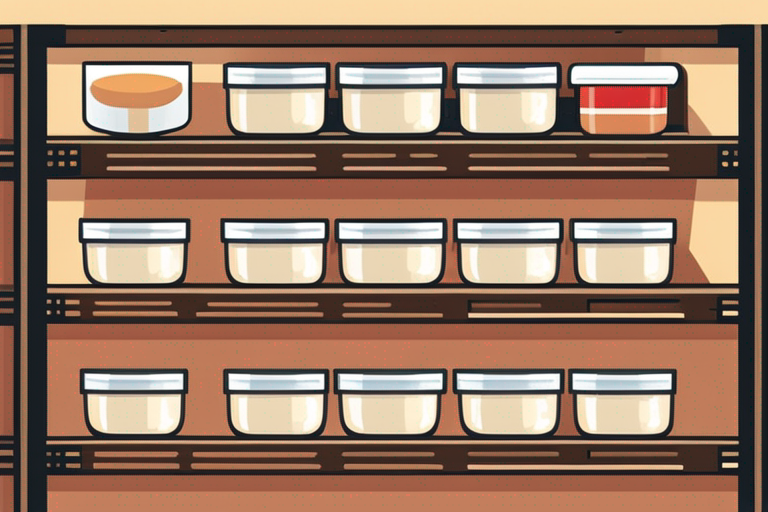
Does Raw Rice Expire? Exploring the Shelf Life and Storage Tips
Get Your Free Food Safety Cheat Sheet
30 most common foods with instant answers. Print it and stick it on your fridge—completely free!
Does Raw Rice Expire? Exploring the Shelf Life and Storage Tips
In many cultures around the world, rice is a staple food that forms the basis of countless dishes. Whether you prefer short-grain, long-grain, brown, or white rice, this versatile grain is a pantry essential. But have you ever wondered, does raw rice expire? In this blog post, we will delve into the shelf life of raw rice, how to store it properly, and essential food safety tips to keep in mind. (Rice)
Understanding the Shelf Life of Raw Rice
Raw rice, when stored correctly, has a relatively long shelf life due to its low moisture content. The shelf life of raw rice can vary depending on the type of rice and how it is stored. Here are some general guidelines to keep in mind:
Factors that Affect the Shelf Life of Raw Rice
-
Type of Rice: Different types of rice have varying shelf lives. For example, white rice typically has a longer shelf life compared to brown rice due to the removal of the outer bran layer.
-
Storage Conditions: Proper storage is crucial in extending the shelf life of raw rice. Factors such as temperature, humidity, and exposure to light can affect the quality of the rice over time.
Signs of Spoiled Raw Rice
It's essential to know how to identify if raw rice has gone bad. Here are some signs that indicate spoiled raw rice:
- Unpleasant Odor: Spoiled rice may have a rancid or musty smell.
- Visible Mold: Mold growth on rice is a clear indicator that it is no longer safe to consume.
- Pest Infestation: Presence of insects or pests in the rice packaging indicates spoilage.
Proper Storage Tips for Raw Rice
To maximize the shelf life of raw rice and maintain its quality, follow these storage tips:
1. Choose the Right Container
- Airtight Containers: Store raw rice in airtight containers to prevent moisture and pests from contaminating the rice.
- Opaque Containers: Opt for opaque containers to protect the rice from light exposure, which can degrade its quality over time.
2. Ideal Storage Conditions
- Cool and Dry: Store raw rice in a cool, dry place away from direct sunlight and heat sources.
- Consistent Temperature: Fluctuations in temperature can affect the quality of rice, so choose a stable storage location.
3. Avoiding Contamination
- Clean Storage Area: Ensure the storage area is clean and free from dust, debris, and other contaminants.
- Keep Away from Strong Odors: Raw rice can absorb strong odors, so store it away from pungent foods or cleaning agents.
Food Safety Tips for Handling Raw Rice
Ensuring food safety when handling raw rice is crucial to prevent foodborne illnesses. Here are some essential food safety tips to keep in mind:
1. Wash Hands Thoroughly
Before handling raw rice or cooking, wash your hands thoroughly with soap and water to prevent cross-contamination.
2. Rinse Rice Before Cooking
Rinsing raw rice before cooking can help remove excess starch and debris, improving its texture and flavor.
3. Cook Rice Properly
Cook raw rice thoroughly to kill any harmful bacteria or pathogens that may be present.
4. Store Cooked Rice Safely
If you have leftover cooked rice, store it promptly in the refrigerator and consume it within a few days to prevent food poisoning.
Conclusion
In conclusion, raw rice has a long shelf life when stored properly in suitable conditions. By understanding the factors that affect the shelf life of raw rice and following proper storage and food safety practices, you can enjoy this pantry staple safely and deliciously. Remember to check for signs of spoilage, choose the right storage containers, and handle raw rice with care to ensure its quality and safety.
For more information on rice and other food safety tips, visit our rice page. (Rice)
Related Posts
Here are some other articles you might find helpful:
- Can You Eat Flour Tortillas Past the Expiration Date?
- Is it Safe to Use Expired Rice Vinegar?
- How Long Do Flour Tortillas Last After the Expiration Date?
- Can I Eat Expired Marshmallows?
- How Long is Unopened Chicken Broth Good For?

Authoritative Food Safety References
These agencies and university labs inform every tip and health precaution we publish.
USDA FoodKeeper – Cold Storage Guidelines
Official refrigerator, freezer, and pantry timelines maintained by the U.S. Department of Agriculture.
Visit USDA FoodKeeperFDA Produce Safety Rule & Grower Guidance
Field-to-fridge handling practices that prevent contamination of fruits, vegetables, and leafy greens.
Visit FDA Produce SafetyCDC Foodborne Illness Prevention Hub
Surveillance-backed guidance on pathogens, symptoms, and steps to reduce foodborne illness risk.
Visit CDC Food SafetyUC Davis Postharvest Technology Center
University research detailing optimal storage atmospheres for produce after harvest.
Visit UC Davis PostharvestPenn State Extension – Home Food Preservation & Safety
Peer-reviewed extension bulletins on safe canning, chilling, and reheating practices.
Visit Penn State ExtensionDoes raw rice expire?
How long does raw rice last?
Can you freeze raw rice?
How should raw rice be stored?
Can you eat raw rice?
Get Your Free Food Safety Cheat Sheet
30 most common foods with instant answers. Print it and stick it on your fridge—completely free! Want more? Upgrade to the complete guide with 70+ foods.
Scan your food directly and get instant safety info using our AI-powered camera feature.